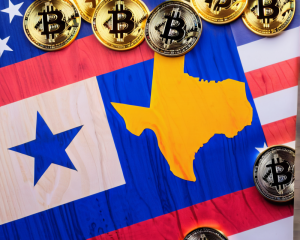The Fines That Don’t Quite Add Up
When it comes to hefty fines from regulators, the crypto space seems to be the toddler of finance—sure, they make messes, but their punishments are a fraction of what the big kids get. According to a recent analysis by Good Jobs First’s violation tracker, the fines imposed on digital asset exchanges pale in comparison to those targeted at traditional financial institutions. In the last two decades, major banks have racked up fines that could make your head spin.
A Closer Look at the Numbers
Bank of America takes the cake (or perhaps the entire bakery) with an astonishing $82 billion in fines over 251 different instances, covering various offenses including securities violations. Other notorious financial players like JPMorgan Chase and Citigroup follow closely with $35.9 billion and $25.5 billion, respectively. Meanwhile, penalties related to the crypto world have accumulated to a mere $2.5 billion from 2009 until early 2021—a tiny drop in a very large bucket.
Understanding the Enforcement Actions
Interestingly, while the penalties seem minimal in the crypto world, there’s no shortage of enforcement actions from U.S. regulators. Just take the 2020 case against Telegram, which was ordered to cough up $1.2 billion in disgorgement and another $18.5 million in civil penalties for its initial coin offering. That’s one hefty fine that would leave even the most robust wallets crying a little.
The Toxicity Leaderboard
It seems that in the world of financial violations, “toxic securities abuses” are the top offenders, accounting for about 29% of the $332.9 billion in penalties imposed on traditional finance entities. In contrast, over 90% of the fines in the crypto space stem from unregistered securities offerings and fraud. That’s one way to illustrate who’s getting the more severe end of the stick!
Notable Cases in the Spotlight
A prime example of this dynamic can be observed with Bank of America, which garnered the largest fine from the Department of Justice at $16.6 billion for its role in the “toxic” mortgage market that contributed to the 2008 financial crisis. If Bank of America was a contestant on a game show called “Who Can Get Fined the Most,” they’d win without even needing a lifeline.
What’s Next for Crypto Regulation?
Despite the softer touch of regulators toward the crypto industry, there are whispers of change. Proposed legislation suggests tighter rules for crypto businesses and expanded reporting requirements for brokers. It appears lawmakers are starting to realize that clear guidelines for crypto companies may be needed to prevent more substantial penalties down the road. After all, a wise person once said that clear guidelines can keep the fines far away (okay, maybe no one has actually said that, but it sounds good, right?).
The Bottom Line
In conclusion, while the fines for crypto-related violations are light compared to traditional financial institutions, the landscape is shifting. With regulators focusing their sights more on the digital assets sector, the future could see bigger fines and tighter regulations on the horizon. Until then, the crypto industry might just want to keep its helmet on for the wild ride ahead.















+ There are no comments
Add yours